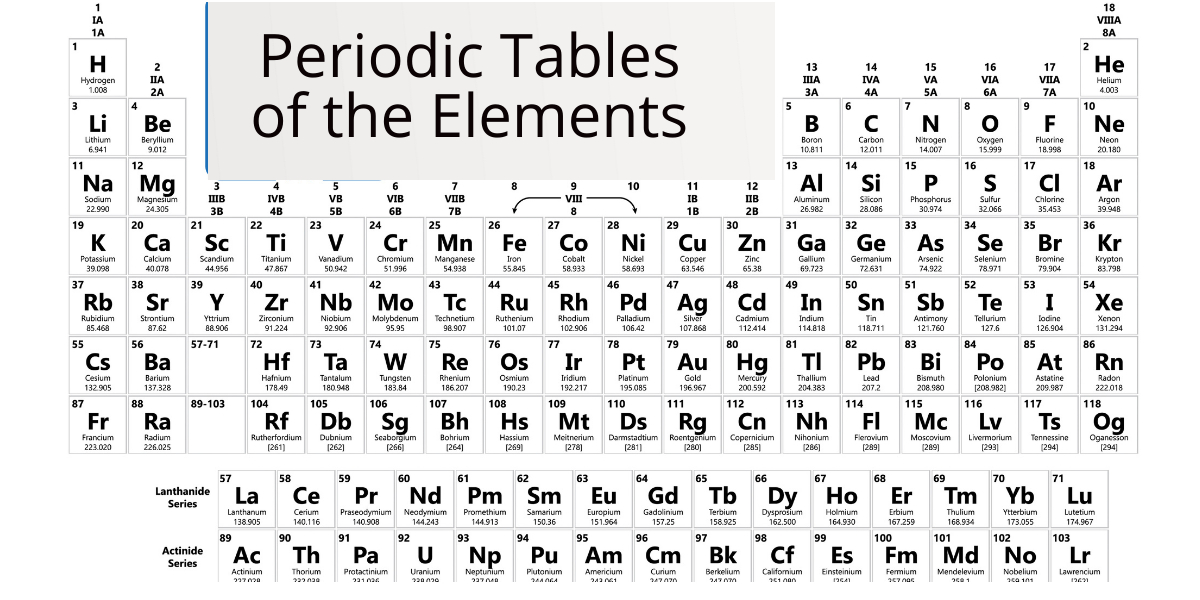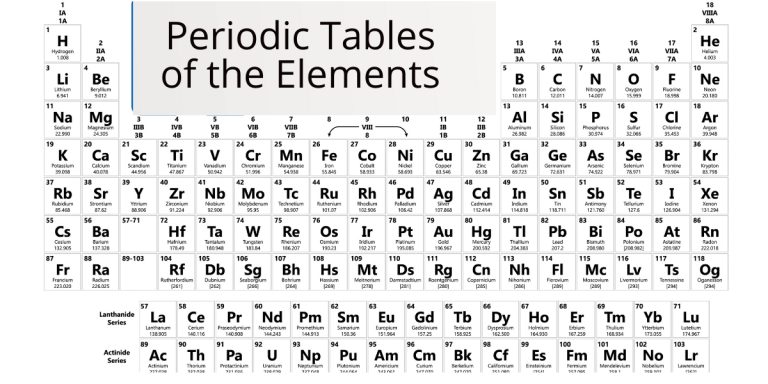Understanding the Periodic Table and Atomic Charges
The periodic table is a fundamental tool in chemistry, organizing all known elements in a systematic way. This article will delve deep into the periodic table, focusing on the concept of charges, the role of atoms, and the behavior of ions. By the end of this exploration, you will have a solid grasp of how these components interact and contribute to the world of chemistry.
1. Introduction
The periodic table is not just a collection of elements; it is a new command in the realm of chemistry that dictates how these elements interact based on their atomic structure and charge. The charges of these elements play a crucial role in their chemical properties and reactions.
“The beauty of chemistry is that it brings order to what seems chaotic.” – Anonymous
2. The Structure of the Periodic Table
The periodic table organizes elements based on their atomic number, which is the number of protons in the nucleus of an atom. This arrangement reveals patterns in the physical and chemical properties of the elements. Here are some key features:
- Rows (Periods): Each row corresponds to the number of electron shells in the atoms.
- Columns (Groups): Elements in the same column have similar chemical properties due to the same number of electrons in their outer shell.
Table 1: Overview of the Periodic Table Structure
| Period | Number of Electron Shells | Example Element |
|---|---|---|
| 1 | 1 | Hydrogen (H) |
| 2 | 2 | Lithium (Li) |
| 3 | 3 | Sodium (Na) |
| 4 | 4 | Potassium (K) |
3. Atomic Structure and Charges
Each atom consists of three primary particles: protons, neutrons, and electrons.
- Protons are positively charged.
- Neutrons are neutral.
- Electrons are negatively charged.
The overall charge of an atom is determined by the balance between protons and electrons. When an atom gains or loses electrons, it becomes an ion.
Charge Calculations
The charge of an atom can be represented as:
Charge=Number of Protons−Number of Electrons
If the charge is positive, the atom is a cation; if negative, it is an anion.
4. Common Charges of Elements
Different elements have characteristic charges based on their electron configurations. Here’s a quick overview of some common charges:
Common Element Charges
| Element | Common Charge |
|---|---|
| Sodium (Na) | +1 |
| Magnesium (Mg) | +2 |
| Chlorine (Cl) | -1 |
| Oxygen (O) | -2 |
Understanding these charges helps predict how elements will behave in chemical reactions.
5. Ions: Cations and Anions
Ions are formed when atoms gain or lose electrons.
- Cations: Positively charged ions (e.g., Na⁺)
- Anions: Negatively charged ions (e.g., Cl⁻)
Table 2: Examples of Cations and Anions
| Ion Type | Ion Symbol | Example Element |
|---|---|---|
| Cation | Na⁺ | Sodium |
| Cation | Mg²⁺ | Magnesium |
| Anion | Cl⁻ | Chlorine |
| Anion | O²⁻ | Oxygen |
Understanding the behavior of ions is crucial in predicting the outcomes of chemical reactions.
6. The Importance of Charge in Chemical Reactions
The charges of ions play a vital role in determining how substances react with each other. For instance:
- Opposite charges attract, leading to the formation of ionic bonds.
- Like charges repel, causing instability in certain combinations.
Example Reaction
When sodium (Na) reacts with chlorine (Cl), the following reaction occurs:
Na + Cl → Na+ + Cl−
This reaction illustrates how sodium donates an electron to chlorine, forming a stable ionic compound, sodium chloride (NaCl).
7. Visualizing the Periodic Table and Charges
A well-structured image of the periodic table can help in visualizing the relationship between elements and their charges. Here’s a simplified representation:

In this table, we can observe:
- Elements with similar charges are grouped.
- Periodic trends, such as increasing charge from left to right.
To enhance your understanding, you can download various images and diagrams of the periodic table that highlight atomic charges.
8. Conclusion
The periodic table serves as a roadmap for understanding chemical behavior, with charges being a critical factor in the interactions between elements. Recognizing how charges influence atomic behavior enables scientists and students alike to predict chemical reactions effectively.
As you continue your journey in chemistry, remember:
“Chemistry is the central science that connects the physical sciences with the life sciences.” – Anonymous

